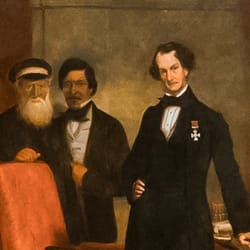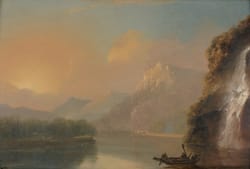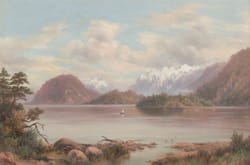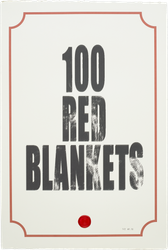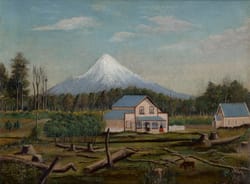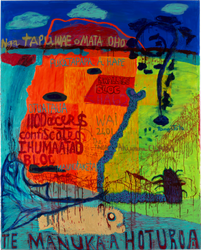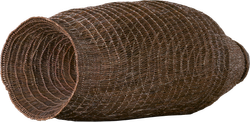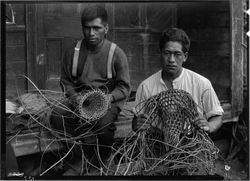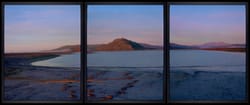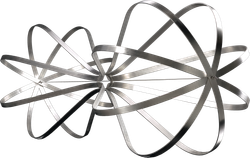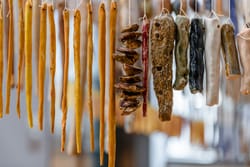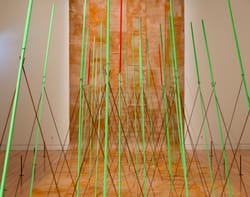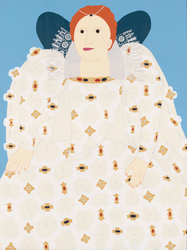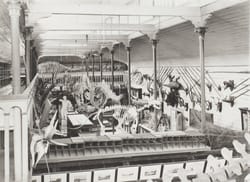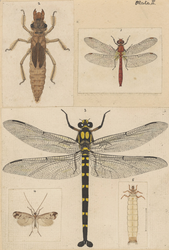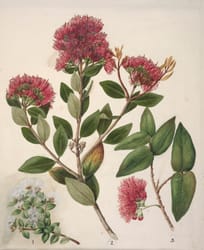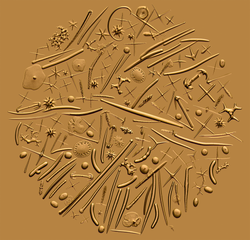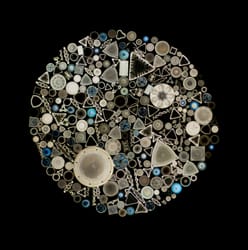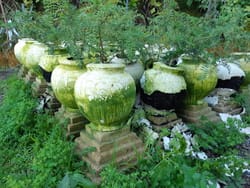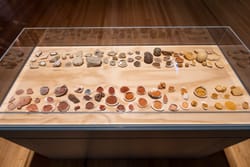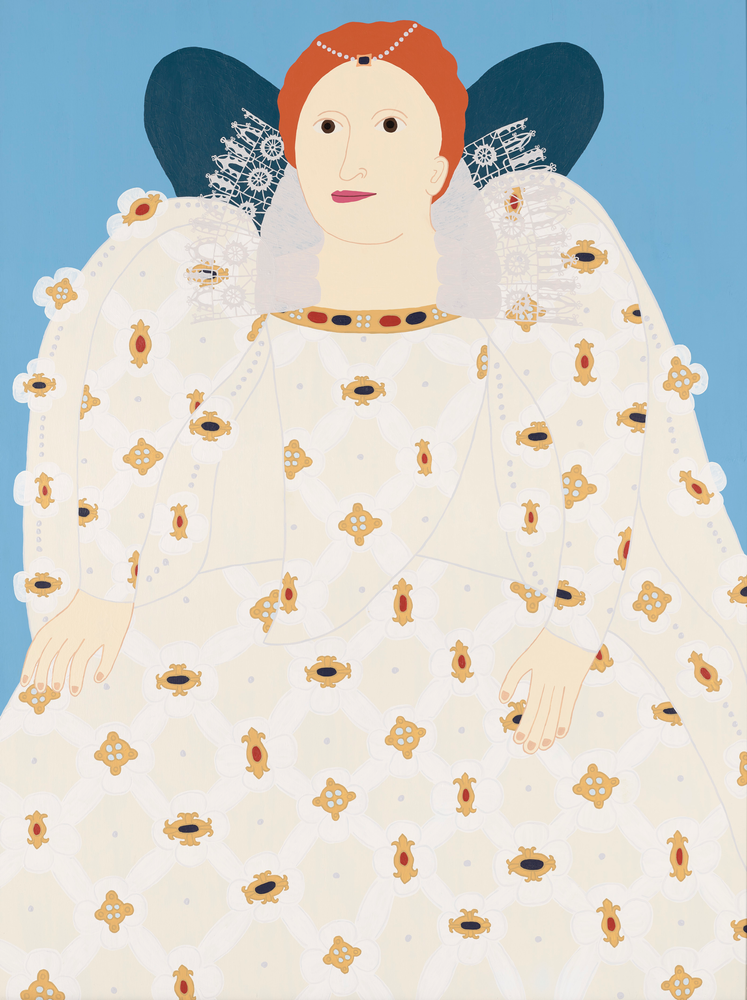
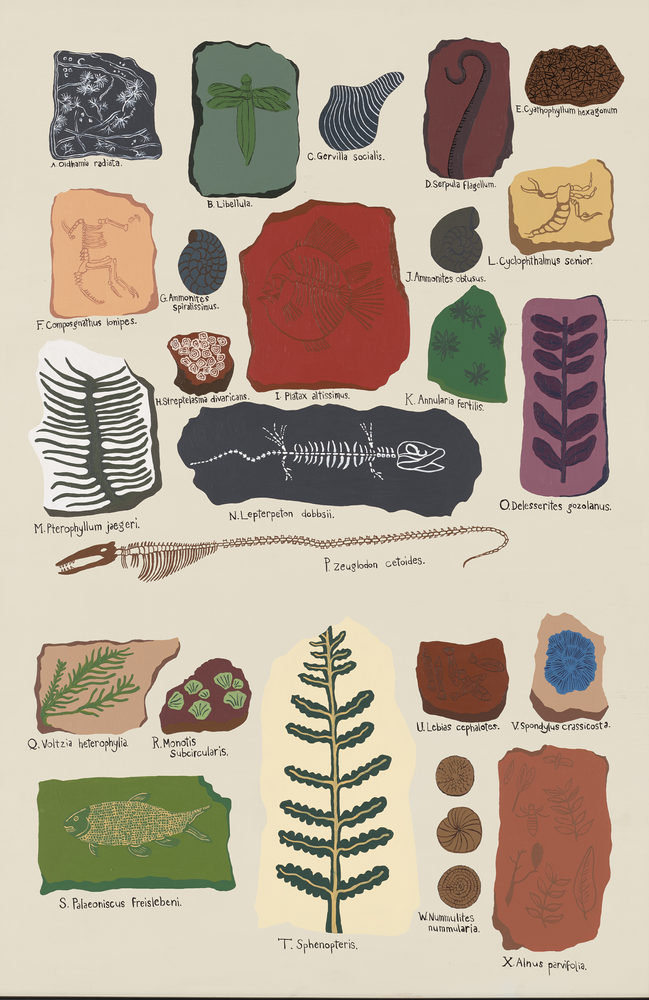
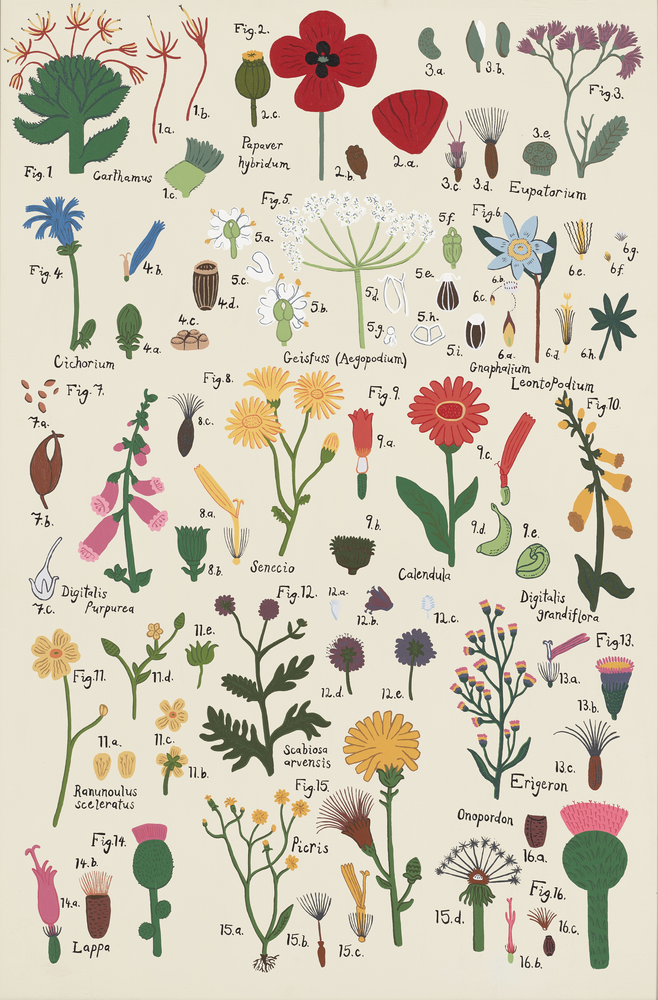
Close
MOANA
Here we are in an exhibition called ‘Arranging Nature’, and I'm here with Megan Tamati-Quennell.
MEGAN
Hello. How are you?
MOANA
Good, thank you. This is quite a portrait. Who is this portrait of?
MEGAN
This is a portrait of Queen Elizabeth I, that Ayesha Green, who's the artist, has created.
MOANA
She does whakapapa Māori. So it's interesting … what's the significance of the royal line?
MEGAN
I think it's really that thing where she's talking about, you know, the introduction of a new way of being through, the British Empire coming here, and through colonisation, and through the arrival of Cook, and then the usurping, kind of, of Māori sovereignty and agency through the Crown, which became part of the way in which this place operated.
She fills in most of the frame, this portrait of the Queen, she's very dominant, there's nothing else in that frame, it's just about who she is and what she represents and what she perhaps upholds.
It's about her dominion over everything … that biblical idea that the Queen's at the top near God, and then it goes down, and animals and plants and those kinds of things are … things that are subordinate. Whereas you know, Māori … non-human and human, there's an interrelationship. It's a different way of operating.
She's the only contemporary artist in the room, most of the other things that she's been put in dialogue with are things from the Collection.
So we've got, like butterflies with pins and all those collections from the natural history part of Te Papa, which we don't get to take out very often. And her paintings are in here to kind of contrast those.
So there's three paintings, um, of Ayesha's in here, shall we go to the other ones?
On the left hand side, slightly behind on a different wall, this one is called, Fossils (Things in the ground).
MOANA
I see colourful paintings of fossils. And they're quite contemporary …
MEGAN
I think aesthetically, they're beautiful works, they're very beautiful works. I think she's a very good painter. A lot of her work is … she copies, but not directly. She copies something that already exists in the world. And this was a vintage poster, probably produced in the 70s, and that would have been in a classroom.
But what she's really talking about is this kind of the soft power of it, and its influence as a particular way of ordering the world which is fed to children even without intent, if you know what I mean. And that what she's wanting to say is there are other worldviews, it's a critique of that particular worldview.
But they appear … they're almost disguised as just innocent posters.
MOANA
Yeah, for sure.
MEGAN
So, on the other side we have another painting of hers, which is flowers.
MOANA
We're going to cross the gallery space, uh, to arrive at … Wildflowers, things, um, that grow.
MEGAN
I don't know, if that's the name of the poster, or if that's the name she's given it.
Also for me the interesting thing is scale. They're all a bit, a little disparate. The poppy is large, what looks like an artichoke is large, but then there's other parts of the plant that are very small. So it's kind of uneven, which is what I think adds to its charm.
I like that she copies and mimics to usurp something in a way, to kind of maybe lessen or to disguise the power that they kind of hold, if you know what I mean.
MOANA
Really, I adore this one. I like all of them. Thank you so much for showing us these pieces.
MEGAN
You're very welcome. It's really great to see these works in this context and in this show.
MOANA
Yeah, it's a wonderful way to relate to the other things displayed here in this gallery.
Right back behind us, by the entrance of this exhibition, there is a large black and white photograph. I'll meet you there.
